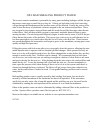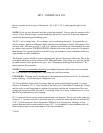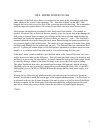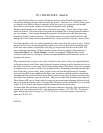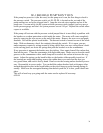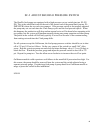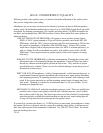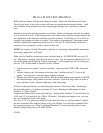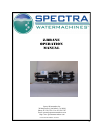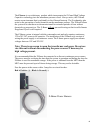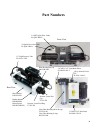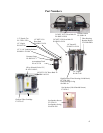41
HS LF-1 POOR PRODUCT QUALITY
With any product water quality issue, you need to check the calibration of the salinity tester
that you are using before proceeding.
Membranes are not an exact science and two identical systems can have a different product
quality result. World health standards deem water of up to 1000 PPM of total dissolved solids
acceptable for drinking consumption. We consider any thing below 700 PPM acceptable but
not ideal, and anything below 500 PPM excellent. Factors that could affect water quality are
addressed below.
LOW SYSTEM FLOW OR PRESSURE will equate to lower product quality (higher
PPM). A 200-C system running at 70 psi will deliver product water in the 400- 500
PPM range, while the 380-C systems with twice the flow and operating at 100 psi into
the same size membrane, will produce 200-300 PPM water. Ventura 150 systems,
which have a higher feed to output pressure ratio (See MISC-4 nominal pressures), as
well as a higher feed flow/membrane area ratio, will produce water in the 150-200
PPM range. These improvements in product quality come at the expense of energy
efficiency.
DAMAGE TO THE MEMBRANE by chlorine contamination. Flushing the system with
chlorinated water will irreparably damage the membrane. Charcoal filters are used to
absorb any chlorine which might be present in flush water. They must be of proper
specification to be suitable. There is no test for chlorine damage except the process of
elimination of other causes.
DIRTY OR SCALED membranes. A dirty (foreign material), scaled (mineral deposits), or
contaminated (bacterial growth) membrane can result in poor water quality and abnor-
mal operating pressures. If operating pressures are above normal, then cleaning is indi-
cated. If the system pressures are within operating normal range, cleaning may have
little result. Cleaning is no better for a membrane than it is for your clothes. Avoid
cleaning as a diagnostic tool.
MECHANICAL LEAKAGE within the membrane pressure vessel. This is an unlikely but
possible cause of poor water quality with old style Codeline pressure vessels (white)
that we have used in the past. The Spectra pressure vessel has a double O-ring arrange-
ment that includes a telltale hole between them so that any salt water leaking past an
O-ring will drip into the boat and not go into the product water.
If system flow (product plus brine) is 1.5 GPM or above on one pump, the membrane is clean,
the product flows are consistent with the system flow and the water quality is still not accept-
able, then replacement of the membrane is indicated. See “HS-LF2 Flow Check” for instruc-
tions on checking flow rates
7/6/14





